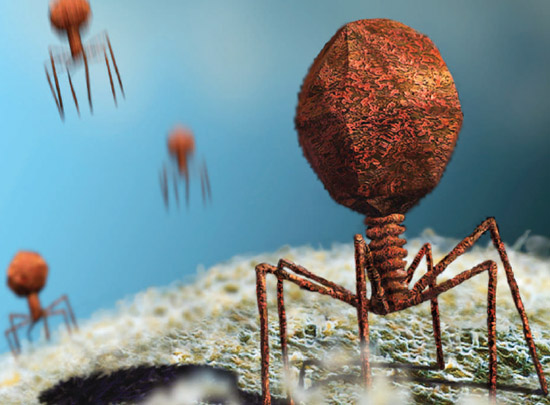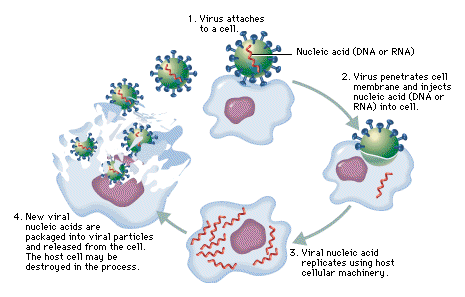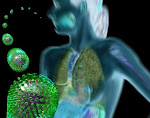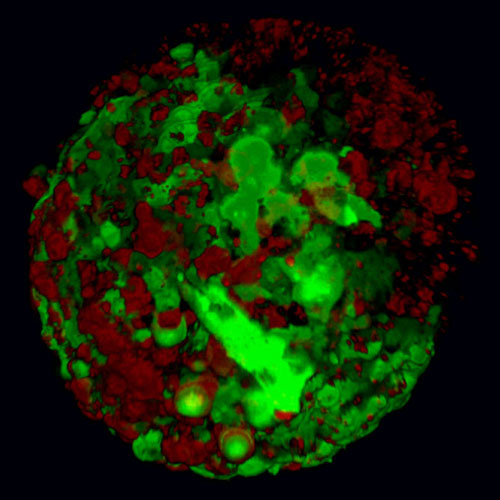What is a virus: I'm sure you know how cells work. Cells are stand-alone living entity that can eat, grow, and reproduce. Viruses aren't like that. In comparison, bacteria are a lot smaller than cells and viruses are a thousand times smaller than bacteria. When observed, they can only be viewed through an electron microscope. Their shape is rather complicated, almost spider-like. Virus particles are composed of:
- Nucleic Acid: DNA or RNA
- Coat of Protein: Protects the DNA or RNA
- Lipid Membrane: Protects the Coat of Protein
Viruses are unable to function without a host cell which is why viruses stride the line that differs from living things and nonliving things.
How a virus infects you: Viruses lie within our environment patiently waiting for a host cell. They come in through our mouths and noses and can also break in through our skin.
Figure 1: Lytic Cycle
1. A virus particle attaches to a host cell.
3. The injected genetic material recruits the host cell's enzymes.
4. The enzymes make parts for more new virus particles.
5. The new particles assemble the parts into new viruses.
6.The new particles break free from the host cell.
How Viruses Work: Once a virus breaks free from a host cell it attacks other cells. Since a virus is capable of reproducing thousands of new viruses, many infections can spread rapidly throughout the body. Your immune system is what responds to the infection. While it fights the virus it produces pyrogens that increase your temperature which causes a fever. The immune response continues until the viruses are eliminated.
What can cause them are:
- An infected person sneezes near you.
- You inhale the virus particle, and it attaches to cells lining the sinuses in your nose.
- The virus attacks the cells lining the sinuses and rapidly reproduces new viruses.
- The host cells break, and new viruses spread into your bloodstream and also into your lungs. Because you have lost cells lining your sinuses, fluid can flow into your nasal passages and give you a runny nose.
- Viruses in the fluid that drips down your throat attack the cells lining your throat and give you a sore throat.
- Viruses in your bloodstream can attack muscle cells and cause you to have muscle aches.





